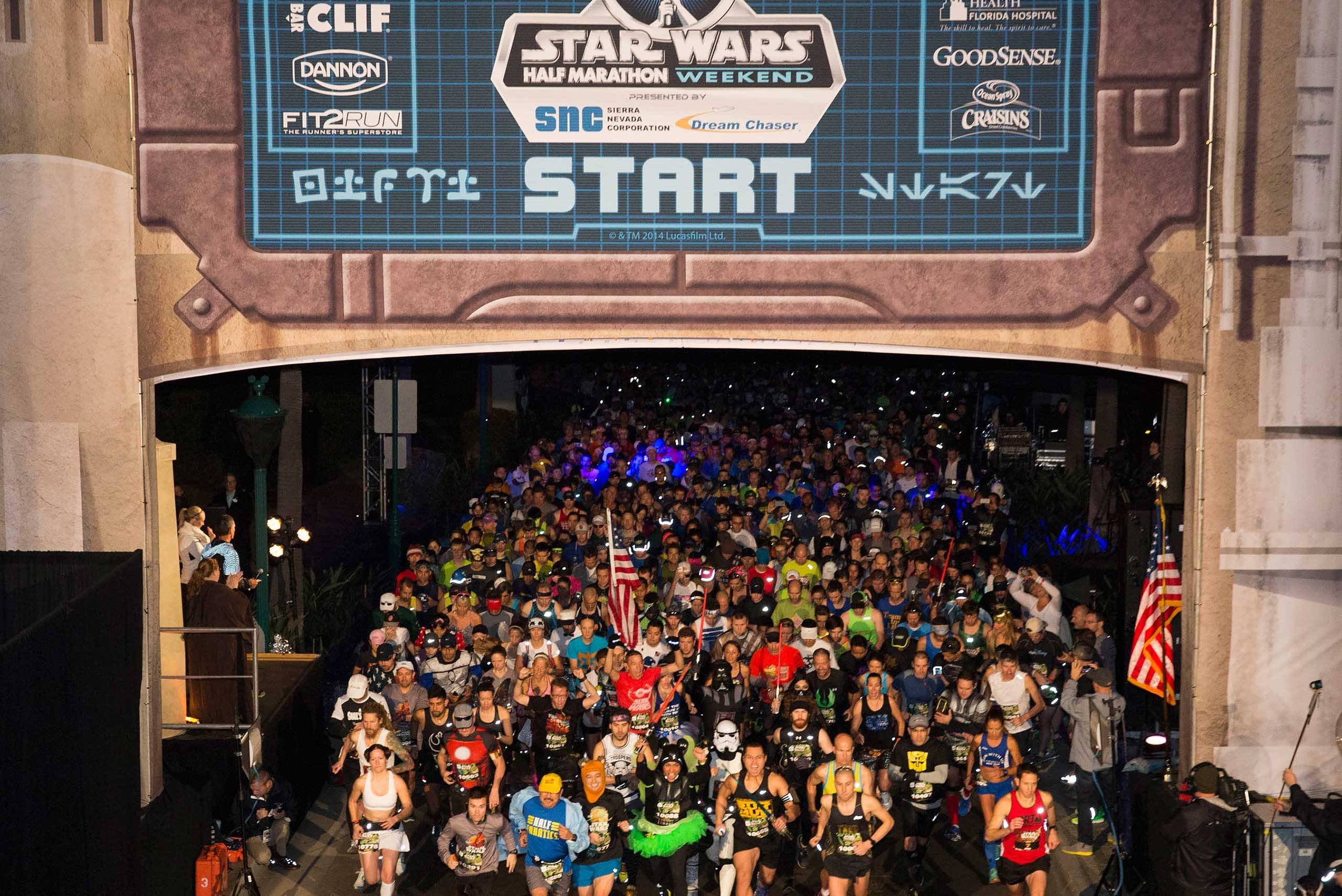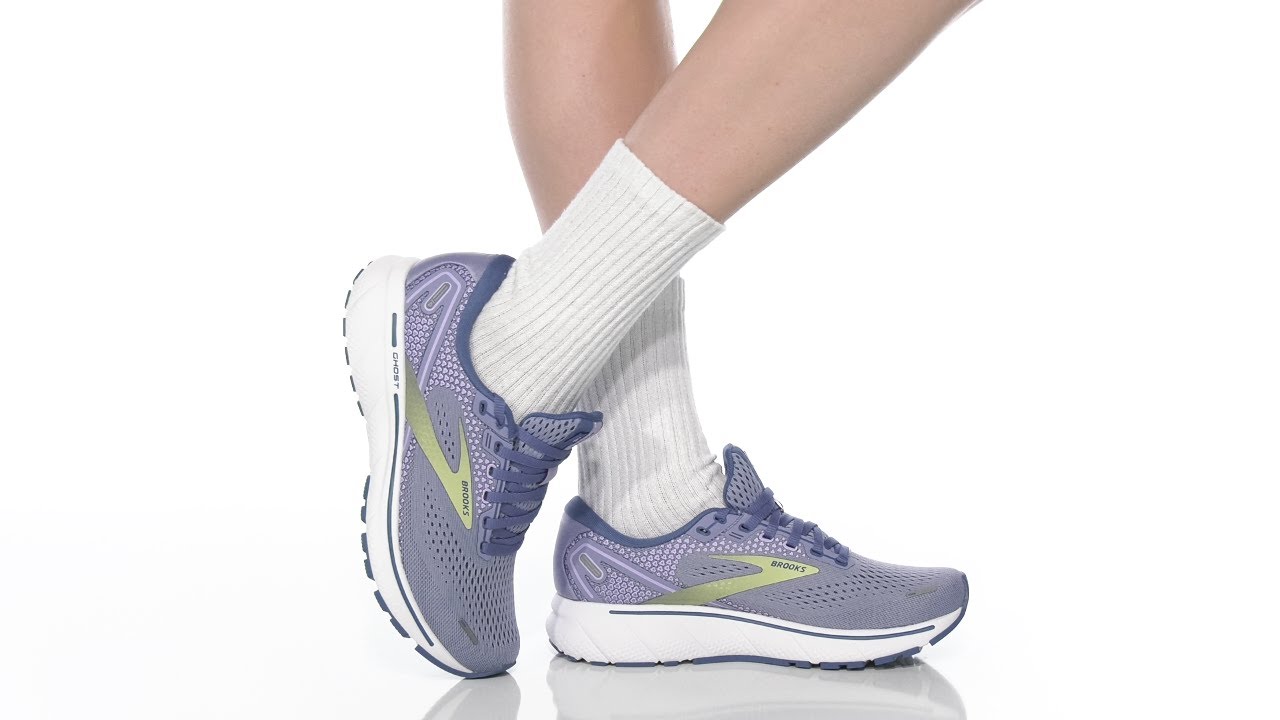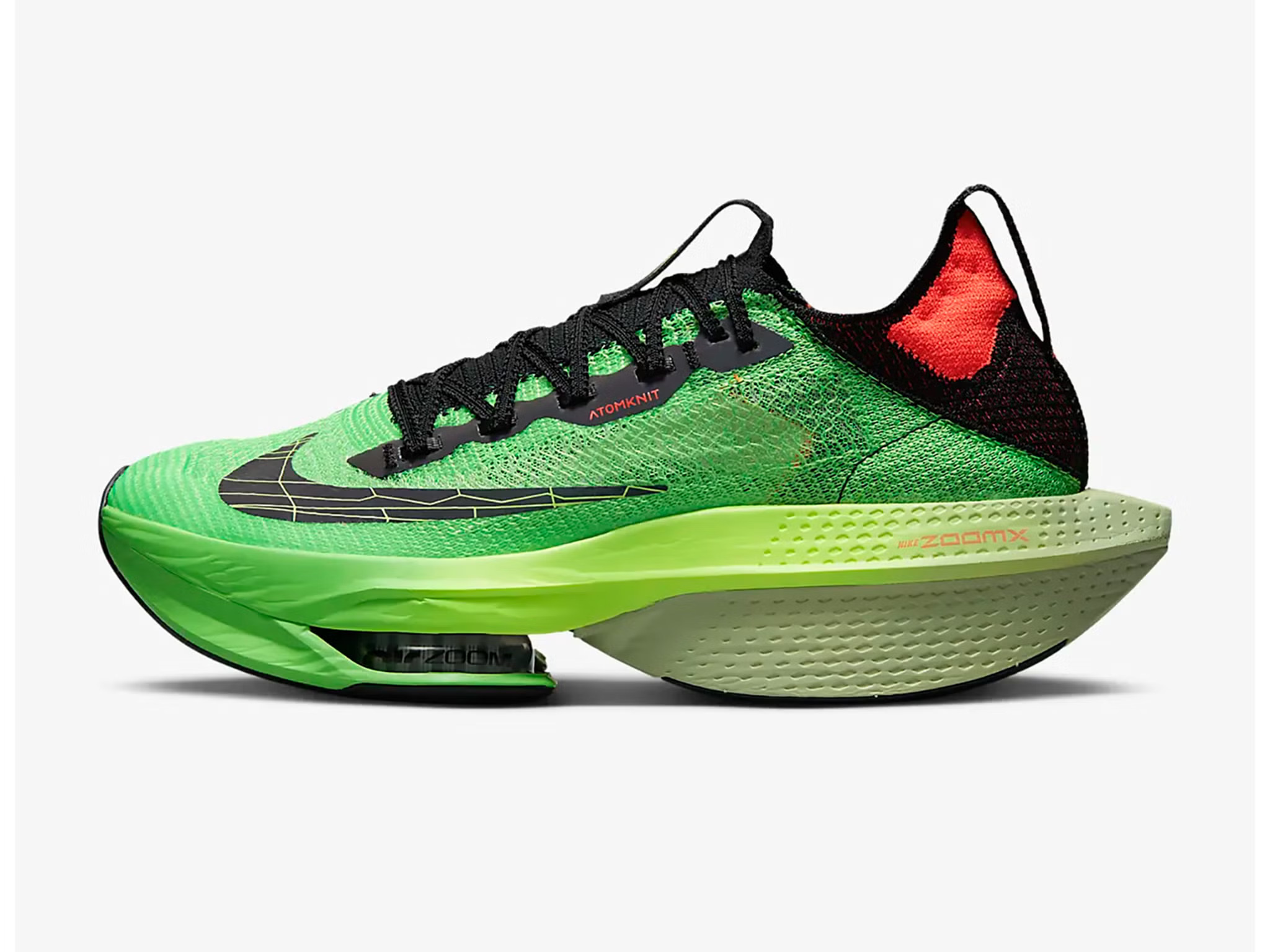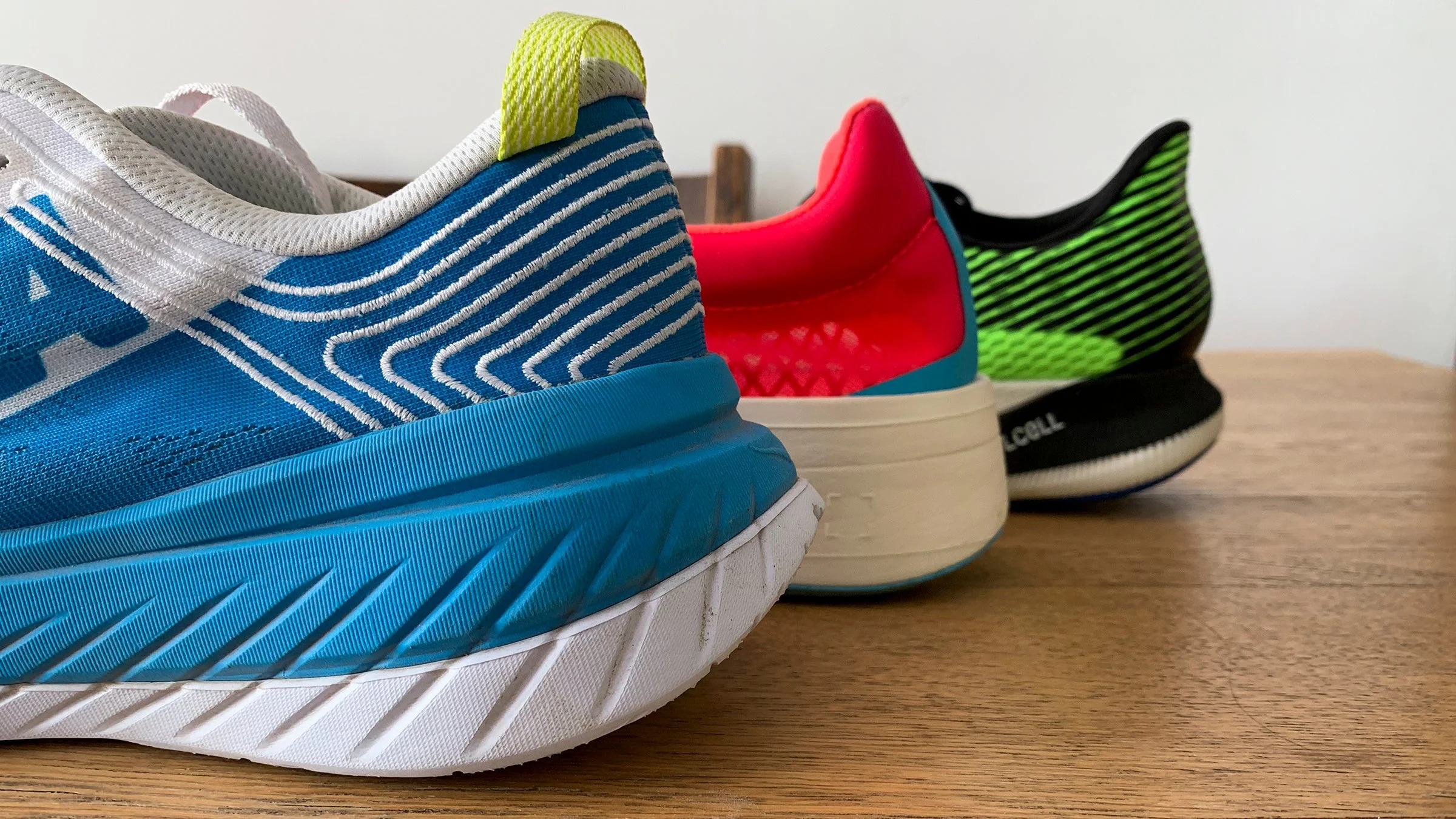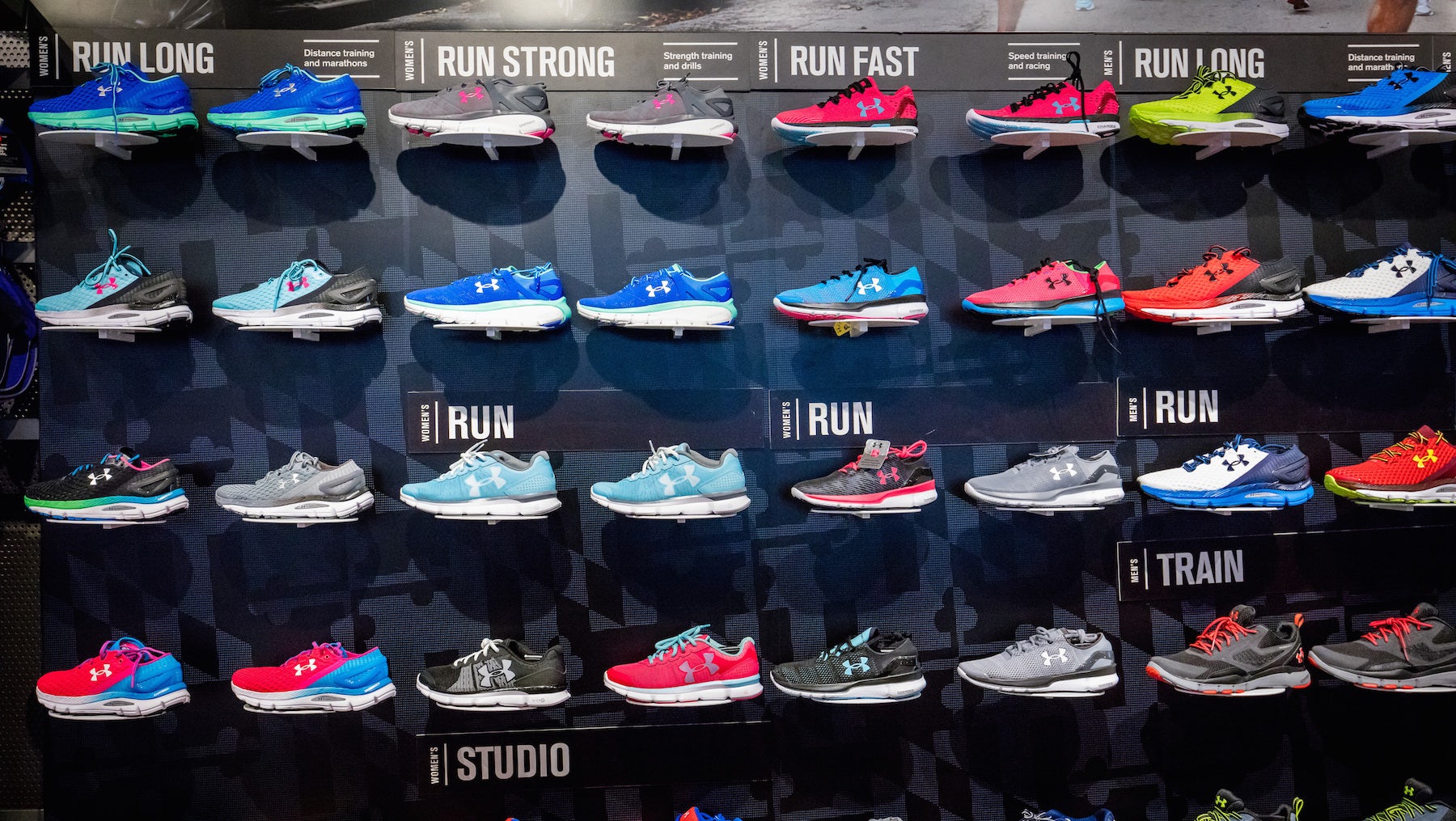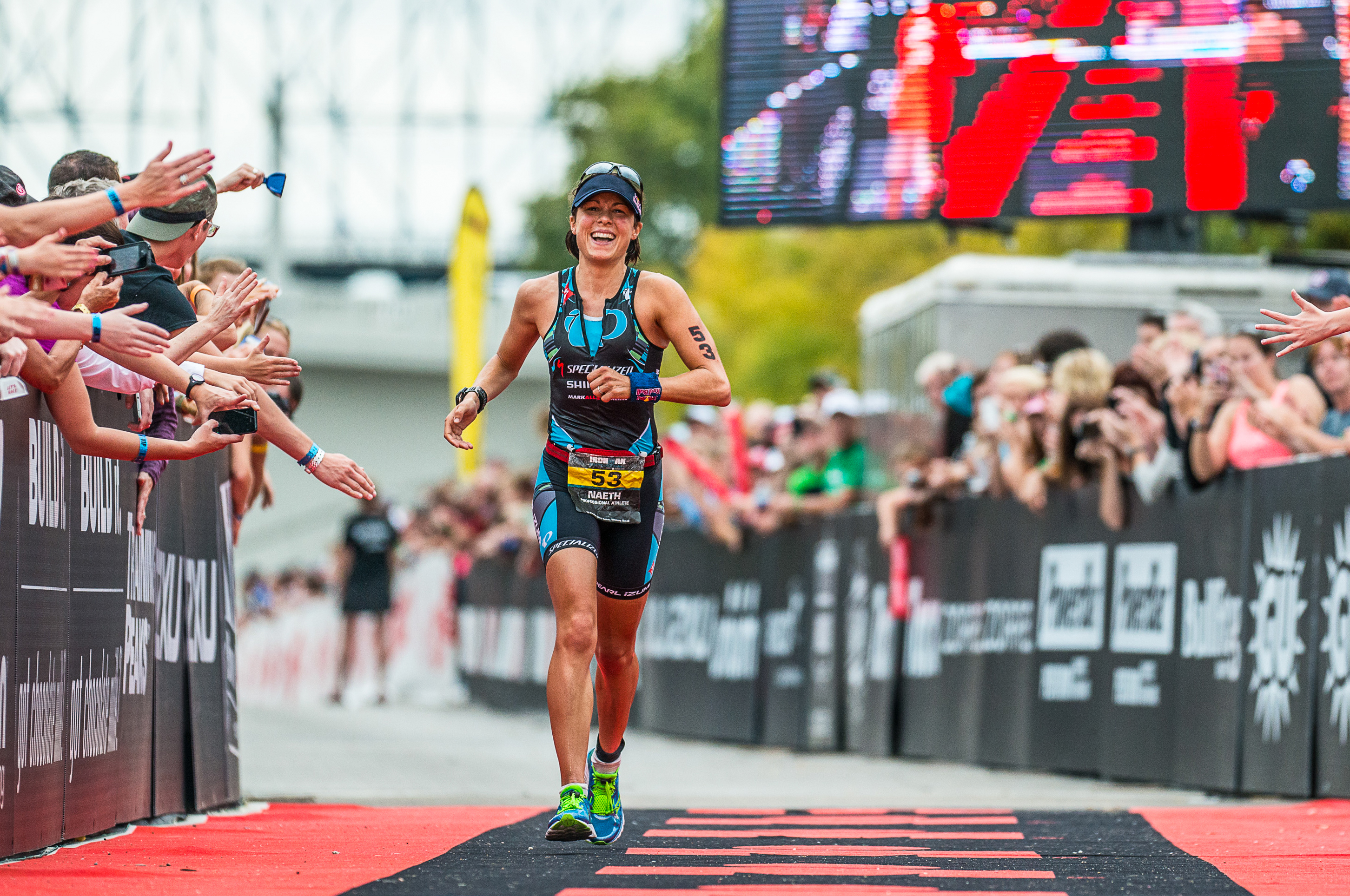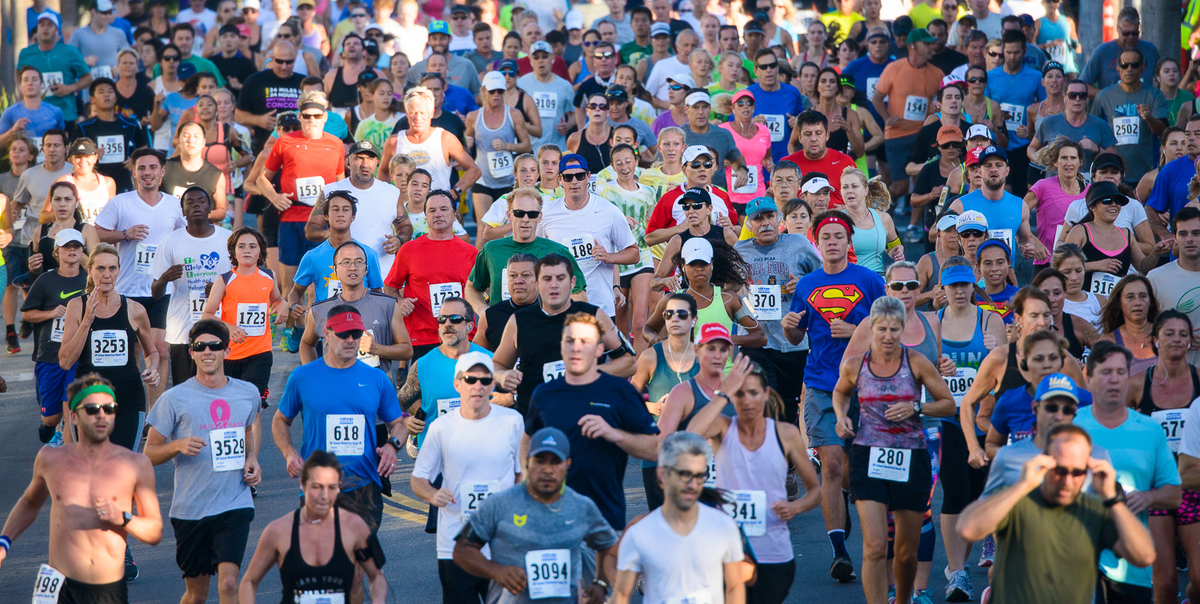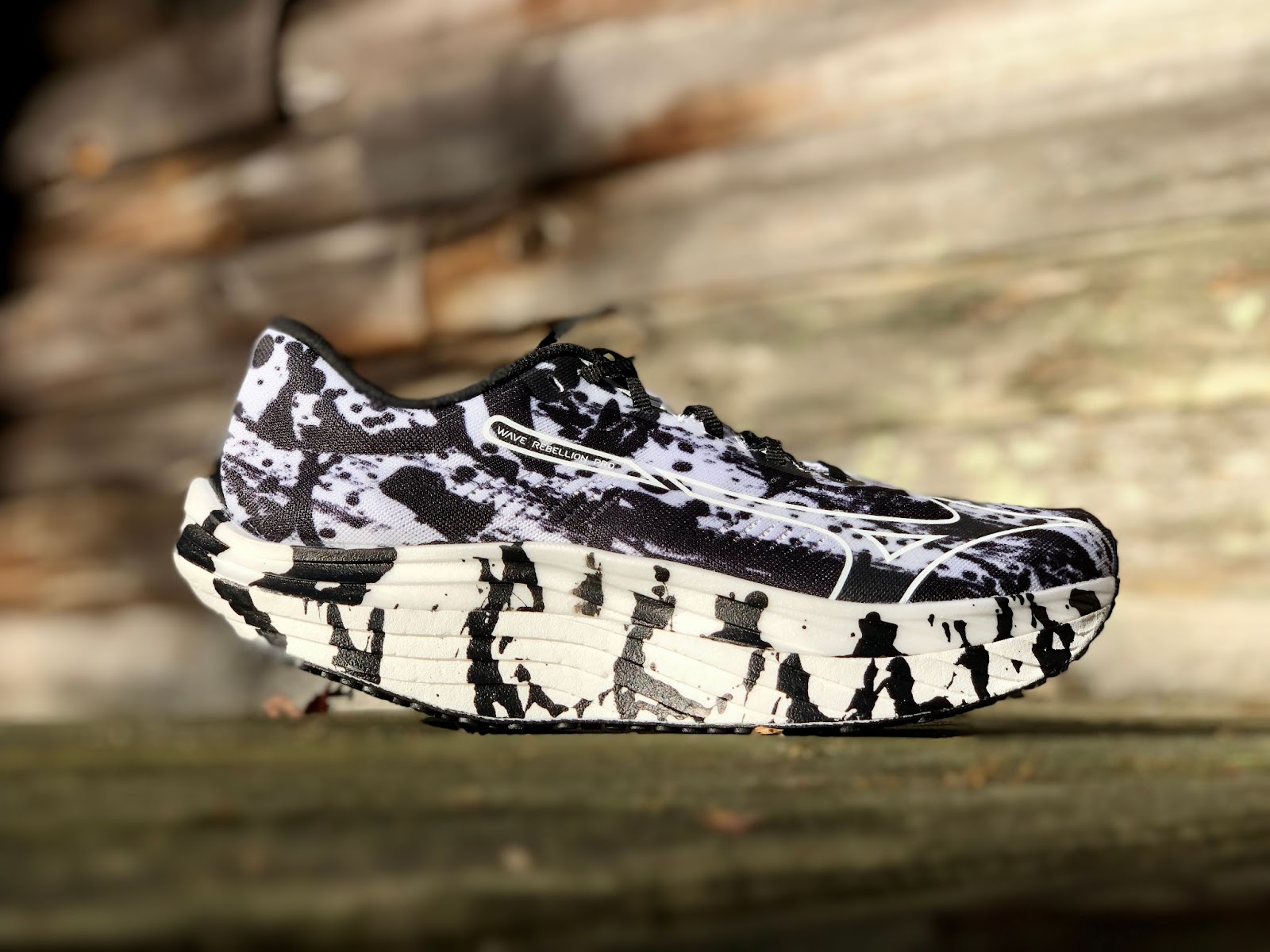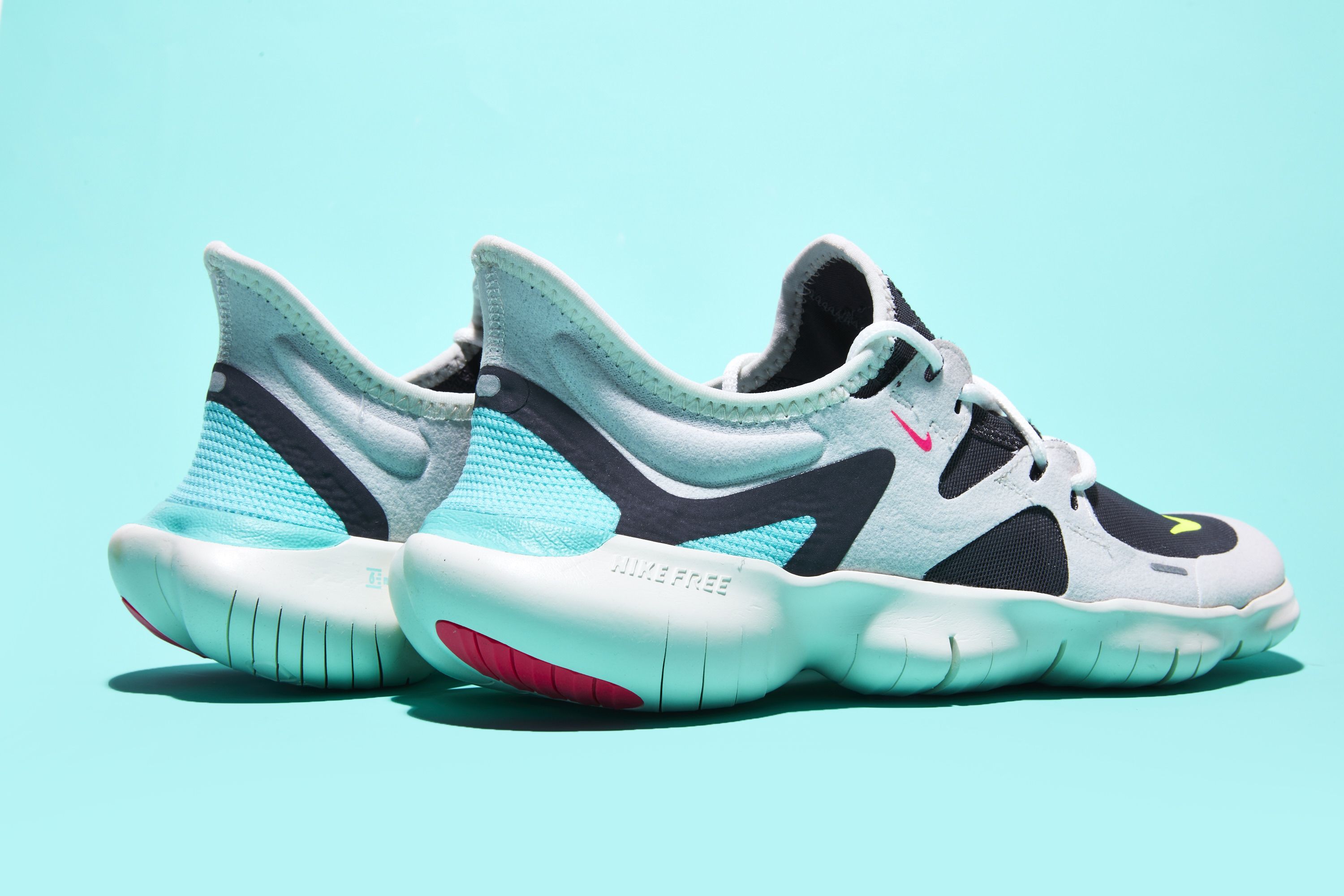Home>Misc>Featured>What Company Has The Largest Market Share In Running Shoes
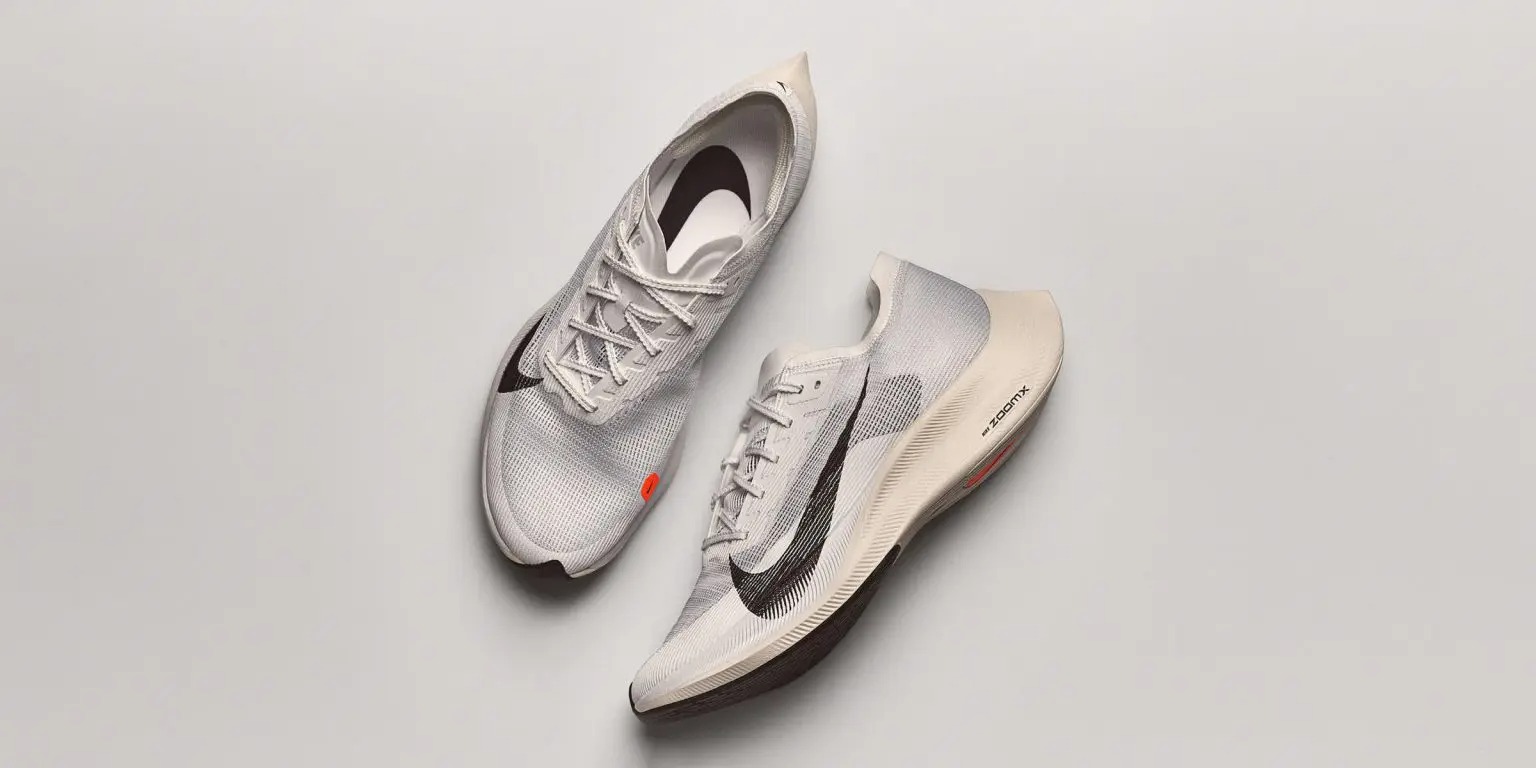

Featured
What Company Has The Largest Market Share In Running Shoes
Modified: August 18, 2023
Discover the featured running shoe brand with the largest market share! Find out which company dominates the industry and leads the way in trendy and high-performance footwear for runners.
Introduction
Welcome to the world of the running shoe industry, a highly competitive market where companies strive to gain the largest market share. In this article, we will explore the concept of market share and its significance in the running shoe industry. We will delve into the factors that influence market share and evaluate the market share of popular running shoe companies. Additionally, we will analyze the strategies employed by the company with the largest market share to attain and maintain its dominance. Lastly, we will discuss the future outlook for market share in the running shoe industry.
When it comes to running shoes, consumers have a plethora of options to choose from. From high-performance running shoes to stylish and casual sneakers, the market offers a wide range of products to meet the diverse needs of runners. With such fierce competition, companies strive to carve out their share of the market in order to stay ahead and remain profitable.
But what exactly is market share? In simple terms, market share refers to the portion of the total market sales that a company or brand captures. It is typically expressed as a percentage. For example, if a company has a 30% market share, it means that they capture 30% of the total running shoe sales in the industry. Market share is a key metric used to measure a company’s success in relation to its competitors.
Market share is of significant importance in the running shoe industry for several reasons. Firstly, it is an indicator of brand strength and consumer preference. A company with a large market share signifies that its products are popular and well-regarded among consumers. This can also help attract new customers who tend to follow the crowd and opt for well-established brands.
Furthermore, market share plays a crucial role in shaping the competitive landscape of the running shoe industry. Companies with a larger market share have more resources and influence, allowing them to invest in research and development, marketing campaigns, and partnerships to further strengthen their position. This creates a barrier for new entrants and increases the difficulty for smaller companies to compete.
Several factors influence market share in the running shoe industry. Firstly, product quality and performance are key determinants. Runners are constantly on the lookout for shoes that offer comfort, durability, and the latest technological advancements. A company that consistently delivers on these factors is more likely to gain a larger market share.
In addition, brand reputation and recognition play a crucial role. Consumers tend to gravitate towards brands that they trust and are familiar with. Companies with a long-standing reputation for producing quality running shoes are more likely to attract loyal customers and secure a larger market share.
Lastly, marketing and advertising efforts also contribute to market share. Effective marketing campaigns that target the right audience and convey the unique selling propositions of the running shoes can significantly impact a company’s market share. Companies that invest in innovative marketing strategies and engage with their target market through various channels are more likely to gain market share.
Now that we have an understanding of market share and its importance in the running shoe industry, let’s dive into the evaluation of popular running shoe companies and identify the leader in terms of market share.
Definition of Market Share
Before we delve into the world of market share in the running shoe industry, let’s start by understanding what market share actually means. Market share refers to the percentage or proportion of the total market sales that a company or brand captures within a specific industry or market segment.
Market share is calculated by dividing a company’s sales revenue by the total market sales revenue. For example, if a company’s annual sales revenue in the running shoe industry is $100 million and the total market sales revenue is $500 million, then the company’s market share would be 20% (100 million divided by 500 million).
Market share is a fundamental metric used by companies and industry analysts to gauge a company’s performance and position in relation to its competitors. It provides insights into the market dynamics and the company’s ability to capture and retain customers.
There are two main types of market share that companies generally track – overall market share and relative market share.
Overall market share is the company’s share of the total market sales. It represents the company’s position in the market as a whole. For example, if a company has a 20% overall market share in the running shoe industry, it means that they capture 20% of the total sales within that industry.
Relative market share, on the other hand, compares a company’s market share to that of its largest competitor. It is calculated by dividing the company’s market share by the market share of the largest competitor. This metric provides insights into the company’s competitive position and its ability to outperform its rivals.
Market share is an essential measure for companies for several reasons. Firstly, a larger market share often translates to higher revenues and profitability. As a company captures a larger portion of the market, it can take advantage of economies of scale, negotiate better deals with suppliers, and invest more in research and development, marketing, and innovation.
Secondly, market share is indicative of a company’s brand strength and customer loyalty. A higher market share suggests that consumers trust and prefer the company’s products over competitors. This can lead to increased customer loyalty, repeat purchases, and positive word-of-mouth marketing.
Furthermore, market share is closely tied to a company’s market power and influence. Companies with a larger market share have a stronger presence and can shape industry trends, set standards, and dictate pricing and distribution strategies. They also have a higher likelihood of attracting new customers who are drawn to popular and well-established brands.
Understanding market share is crucial for strategic decision-making and market positioning. Companies use market share data to identify growth opportunities, assess the effectiveness of marketing and sales efforts, evaluate product performance, monitor competitive threats, and allocate resources.
Now that we have a clear grasp of what market share means, let’s explore its significance and implications in the running shoe industry.
Importance of Market Share in the Running Shoe Industry
Market share holds significant importance in the running shoe industry for both companies and consumers. It serves as a key indicator of a company’s success and can influence various aspects of the industry. Let’s explore the importance of market share in the running shoe industry.
Firstly, market share is a measure of brand strength and consumer preference. Companies with a larger market share in the running shoe industry often have a well-established brand reputation. This indicates that their products are trusted and favored by consumers. A higher market share can attract new customers who follow the crowd and opt for brands that are already popular and well-regarded.
Secondly, market share plays a crucial role in shaping the competitive landscape of the running shoe industry. Companies with larger market shares have more resources and bargaining power. This enables them to invest in research and development, marketing campaigns, and strategic partnerships to further strengthen their position. As a result, it becomes challenging for new entrants to establish a foothold and for smaller companies to compete against industry giants.
An important aspect affected by market share is pricing strategy. Companies with a larger market share often have the advantage of economies of scale, which allows them to produce running shoes at a lower cost. This gives them the flexibility to offer competitive pricing, attracting more customers and potentially further increasing their market share. On the other hand, companies with a smaller market share may struggle to match the pricing of their larger competitors.
Moreover, market share is closely linked to innovation and product development. Companies with larger market shares have greater access to resources and funds, enabling them to invest in research and development. This helps them stay at the forefront of technological advancements, offering innovative running shoe designs with enhanced comfort and performance. A higher market share provides the financial stability required to invest in creating cutting-edge products.
Market share also impacts retailer and distribution relationships. Running shoe companies with larger market shares can exercise more control over their distribution channels and retail partnerships. They have the ability to negotiate better terms and secure prominent shelf space, ensuring their products are more readily available to consumers. This further solidifies their position in the industry and can lead to increased sales and market dominance.
For consumers, market share is important as well. A company with a large market share is generally perceived as more trustworthy and reliable. Consumers are more likely to choose products from companies that have a higher market share, as it showcases the brand’s popularity and success. Additionally, a larger market share often indicates a wider range of options and availability of running shoe styles and sizes.
In summary, market share holds great significance in the running shoe industry. It reflects consumer preferences, brand strength, and market power. It affects pricing strategies, innovation, distribution channels, and ultimately shapes the competitive landscape of the industry. For companies, a larger market share can lead to greater profitability and a stronger foothold in the market. For consumers, market share serves as a trust indicator and offers a wider variety of options. Now, let’s dive deeper into the factors that influence market share in the running shoe industry.
Factors Affecting Market Share in the Running Shoe Industry
The market share of running shoe companies is influenced by a variety of factors that can determine their success or failure in the industry. Understanding these factors is crucial for companies aiming to gain and maintain a significant market share. Let’s explore the key factors that can affect market share in the running shoe industry.
1. Product Quality and Performance: One of the most significant factors affecting market share in the running shoe industry is the quality and performance of the products. Consumers seek running shoes that offer comfort, durability, and the latest technological advancements. Companies that consistently deliver on these factors are more likely to gain a larger market share. Investing in research and development to improve product features and meet customer demands is essential for success.
2. Brand Reputation and Recognition: Brand reputation and recognition play a crucial role in the running shoe industry. Consumers often gravitate towards well-established brands that they trust and are familiar with. Companies with a long-standing reputation for producing high-quality running shoes are more likely to attract loyal customers and secure a larger market share. Building brand equity and maintaining a positive brand image through consistent messaging and customer satisfaction are key factors in gaining market share.
3. Marketing and Advertising Efforts: Effective marketing and advertising play a significant role in capturing and maintaining market share. Companies that invest in innovative marketing strategies and actively engage with their target market through various channels are more likely to succeed. Creating compelling brand stories, utilizing social media platforms, collaborating with influencers, and implementing targeted advertising campaigns can help generate brand awareness, attract new customers, and ultimately increase market share.
4. Pricing Strategy: Price is a critical factor that influences consumer purchasing decisions. A company’s pricing strategy can impact its market share in the running shoe industry. Companies with a larger market share often have the advantage of economies of scale, allowing them to produce running shoes at a lower cost. They may choose to offer competitive pricing, attracting more customers and potentially increasing their market share. However, it’s important to strike a balance between pricing and perceived value to ensure profitability and brand positioning.
5. Product Differentiation: Another important factor affecting market share is product differentiation. Running shoe companies that can differentiate themselves from their competitors by offering unique features, innovative designs, or specialized running technologies are more likely to capture market share. Companies must continuously strive to innovate and offer distinct products that resonate with their target market, setting themselves apart from the competition.
6. Distribution Network: The effectiveness and reach of a company’s distribution network also impact its market share. Companies with a well-established distribution network, strong relationships with retailers, and wide availability of their products are more likely to attract customers and gain market share. Having strategic partnerships and ensuring that running shoes are accessible to consumers through both physical and online retail channels can make a significant difference in market share.
7. Customer Service and Support: Providing exceptional customer service and support can help companies gain a larger market share. Building strong relationships with customers through personalized experiences, prompt response to queries, and addressing customer concerns can enhance brand loyalty and encourage repeat purchases. Satisfied customers are more likely to recommend a brand to others, further expanding its market share.
It’s important to note that these factors are interconnected and can influence one another. Striking a balance between product quality, brand reputation, marketing efforts, pricing, and other factors is essential for running shoe companies aiming to gain and retain a significant market share in this highly competitive industry.
Now that we understand the key factors affecting market share in the running shoe industry, let’s evaluate the market share of popular running shoe companies and identify the leader in the industry.
Evaluation of Popular Running Shoe Companies’ Market Share
When it comes to the running shoe industry, several popular companies compete to capture the largest market share. Let’s evaluate the market share of some of these well-known running shoe companies and understand their standing in the industry.
Nike: Undoubtedly one of the leading players in the running shoe industry, Nike has consistently maintained a substantial market share. Known for its innovative designs, cutting-edge technology, and strong brand presence, Nike has managed to capture the attention of runners worldwide. The company’s extensive product line, ranging from high-performance footwear to fashionable running sneakers, caters to a wide range of consumer preferences. With strategic marketing campaigns and endorsements from professional athletes, Nike has successfully solidified its position as a market leader in the running shoe industry.
Adidas: Adidas is another prominent player in the running shoe market. The brand is recognized for its commitment to quality, performance, and style. With a diverse range of running shoes that cater to different types of runners, Adidas has gained a considerable market share. The company’s innovative technologies and collaborations with athletes and celebrities have helped it establish a strong global presence. Adidas’ focus on sustainability and eco-friendly practices has also resonated well with environmentally conscious consumers, contributing to its market share growth.
New Balance: New Balance has carved out a significant market share, particularly among runners who prioritize comfort and support. The brand’s emphasis on fit, cushioning, and stability has resonated with a loyal customer base. New Balance offers a variety of running shoe models for different types of runners, including those with specific needs such as wide feet or overpronation. The company’s commitment to domestic manufacturing and ethical practices has also helped it differentiate itself from competitors and attract a dedicated consumer following.
Brooks: Brooks is renowned for its focus on running shoes and its dedication to providing the best possible performance for runners. The company has been steadily gaining market share by delivering high-quality running shoes engineered to suit various running styles and conditions. With a strong emphasis on biomechanics and extensive research and development, Brooks has gained a reputation for producing running shoes that offer excellent support, cushioning, and durability. The company’s commitment to sustainability and social responsibility has also resonated with consumers, further contributing to their market share growth.
Under Armour: Under Armour has made significant strides in the running shoe industry in recent years. Known for its athletic apparel, the company has successfully expanded into the running shoe market. Under Armour’s running shoes emphasize performance, comfort, and style, attracting a growing customer base. The use of innovative technologies and strategic collaborations with athletes has helped Under Armour gain a foothold and increase its market share in a competitive industry.
While these are just a few examples, there are numerous other running shoe companies vying for market share. Each brand has its unique strengths and strategies to attract and retain customers. It’s important to note that market share figures can vary based on region, target demographic, and other factors. Companies must continually adapt and innovate to stay competitive and maintain or increase their market share.
Now, let’s take a closer look at the leading company with the largest market share in the running shoe industry and explore the strategies it has employed to attain and maintain its dominance.
Analysis of the Largest Market Share Holder in the Running Shoe Industry
When it comes to the running shoe industry, one company stands out as the largest market share holder: Nike. With its strong brand presence, innovative designs, and extensive product range, Nike has managed to dominate the running shoe market. Let’s dive into an analysis of the strategies and factors that have contributed to Nike’s success in gaining and maintaining its significant market share.
Brand Power and Recognition: Nike’s brand power and recognition are unparalleled in the industry. The iconic Nike swoosh logo is instantly recognizable worldwide and is associated with excellence and performance. The company’s longstanding reputation for quality and innovation has helped build trust and loyalty among consumers, attracting a large customer base. The strong brand appeal and emotional connection that Nike has created have played a vital role in its market dominance.
Innovative Technology and Product Development: Nike invests heavily in research and development to push the boundaries of running shoe technology. The company continuously introduces new innovative features and materials to enhance performance, comfort, and durability. From Nike Air cushioning to Nike React foam, the brand’s commitment to technological advancements has positioned its running shoes as top choices among athletes and casual runners alike. By staying ahead of the curve and consistently delivering cutting-edge products, Nike has solidified its market share.
Marketing and Endorsements: Nike has excelled in building a strong marketing presence that resonates with consumers. The company’s strategic marketing campaigns, featuring inspirational stories and powerful messages, have positioned Nike as a leader in the running shoe industry. Additionally, Nike’s roster of high-profile athlete endorsements, including famous runners and other sports stars, has enhanced its credibility and visibility. These endorsements not only attract consumers but also contribute to the perception of Nike as a brand associated with elite performance.
Diverse Product Portfolio: Nike offers an extensive product range that caters to various running styles and preferences. Whether it’s lightweight racing shoes, cushioned long-distance running shoes, or stylish lifestyle sneakers, Nike has a wide selection to meet different consumer needs. This diverse product portfolio allows Nike to capture a larger market share by appealing to a broad range of runners, from professional athletes to casual fitness enthusiasts.
Retail and Distribution Strategy: Nike has implemented a strategic retail and distribution strategy to ensure its products are widely available to consumers. The brand has established a strong presence in both physical retail stores and online platforms, providing easy access to its running shoes. Nike also partners with various authorized retailers globally, ensuring its products are accessible in multiple markets. This widespread availability contributes to its large market share.
Social and Environmental Responsibility: Nike’s commitment to social and environmental responsibility has resonated with consumers, particularly in recent years. The company has made significant efforts to address sustainability issues and improve labor practices within its supply chain. This dedication to corporate social responsibility has positively impacted Nike’s brand perception and attracted environmentally conscious consumers, further contributing to its market share growth.
It is crucial to note that Nike’s success in gaining the largest market share is the result of a combination of factors and strategies. By leveraging its brand power, investing in innovation, conducting impactful marketing campaigns, providing a diverse product range, and demonstrating social and environmental responsibility, Nike has positioned itself at the forefront of the running shoe industry.
Now, let’s take a look at the future outlook for market share in the running shoe industry and explore the potential trends and developments that may shape the competitive landscape.
Strategies Used by the Leading Company to Attain and Maintain Market Share
Nike, the leading company in the running shoe industry, has implemented various strategies to attain and maintain its significant market share. Let’s explore the key strategies that have contributed to Nike’s success in dominating the market.
1. Continuous Innovation: Nike’s commitment to innovation has been a driving force behind its market share growth. The company invests heavily in research and development to introduce new technologies and materials that enhance the performance, comfort, and durability of their running shoes. By continuously pushing the boundaries of running shoe design, Nike stays ahead of its competitors and captivates consumers with innovative features and designs.
2. Strong Branding and Marketing: Nike’s strong brand and effective marketing strategies have played a crucial role in attaining and maintaining its market share. The company has successfully created a powerful and recognizable brand image that resonates with consumers. Nike’s marketing campaigns are impactful and emotionally driven, inspiring athletes and capturing the attention of the target market. With celebrity endorsements and partnerships with high-profile athletes, Nike is able to position itself as a leader in the running shoe industry.
3. Diverse Product Range: Nike offers a wide range of running shoes that cater to different running styles, preferences, and performance levels. From high-performance racing shoes to everyday running sneakers, Nike has a product for every type of runner. This diverse product range allows Nike to capture a larger market share by appealing to a broader consumer base. By providing options for different needs and preferences, Nike ensures that it remains a top choice for runners across various segments.
4. Global Distribution Network: Nike has built a strong distribution network that ensures its products are widely available to consumers around the world. The company has established partnerships with authorized retailers and operates its own retail stores in key locations. Furthermore, Nike has expanded its online presence, offering easy access to its products through e-commerce platforms. This extensive distribution network enables Nike to reach a broad audience, enhancing its market share and brand visibility.
5. Focus on Athlete Endorsements: Nike’s long history of successful partnerships with elite athletes has been instrumental in its market share growth. By associating the brand with top athletes and showcasing their achievements, Nike reinforces its image as a brand of choice for serious athletes and enthusiasts. The endorsement of professional runners and other sports stars not only attracts consumers but also establishes the credibility and performance-driven reputation of Nike’s running shoes.
6. Social and Environmental Responsibility: Nike has shown a commitment to social and environmental responsibility, which has resonated with consumers. The company has made significant efforts to address sustainability concerns and improve the ethical practices within its supply chain. By prioritizing social and environmental responsibility, Nike not only appeals to environmentally conscious consumers but also enhances its brand reputation and loyalty, contributing to its market share growth.
These strategies have played a key role in Nike’s ability to attain and maintain its position as the market leader in the running shoe industry. By consistently delivering innovative products, leveraging strong branding and marketing, offering a diverse range of products, expanding its distribution network, focusing on athlete endorsements, and demonstrating social and environmental responsibility, Nike has successfully captured the attention and loyalty of consumers, solidifying its market share.
Now, let’s explore the future outlook for market share in the running shoe industry and examine the potential trends that may impact the competitive landscape.
Future Outlook for Market Share in the Running Shoe Industry
The running shoe industry is constantly evolving, influenced by changing consumer preferences, technological advancements, and market dynamics. Understanding the future outlook for market share in this industry is crucial for companies striving to stay ahead of the competition. Let’s explore some key factors and trends that may shape the future market share in the running shoe industry.
1. Technological Innovation: As technology continues to advance, we can expect to see further innovation in running shoe design and features. Companies that invest in research and development to introduce new technologies, such as advanced cushioning systems, lightweight materials, or energy return technologies, will likely gain a competitive edge. Developing running shoes that enhance performance, improve comfort, and reduce the risk of injuries will be a driving force in capturing market share.
2. Sustainability and Ethical Practices: With increasing environmental awareness, consumers are seeking running shoe companies that prioritize sustainability and ethical practices. Companies that adopt eco-friendly manufacturing processes, use recycled materials, and demonstrate transparency in their supply chain will attract environmentally conscious consumers. Incorporating sustainable practices and emphasizing social responsibility will become a significant factor for gaining market share in the future.
3. Personalization and Customization: The demand for personalized running shoes is on the rise. Companies that offer customization options, allowing runners to personalize their shoes based on their specific needs and preferences, will likely secure a larger market share. Customization can include aspects like individualized fit, color choices, and even personalized performance features. The ability to cater to individual runner’s needs will be a crucial factor in the future running shoe market.
4. Digital Transformation: The digital transformation of the retail landscape presents opportunities for running shoe companies to expand their market share. Online sales channels, digital marketing, and e-commerce platforms are likely to continue growing in importance. Companies that effectively utilize digital marketing strategies, engage with their customers through social media, and provide seamless online purchasing experiences will have a competitive advantage in the future market.
5. Health and Wellness Trends: The growing emphasis on health and wellness is driving the demand for running shoes. Companies that position their brand as part of a healthy lifestyle and offer running shoes that promote injury prevention, comfort, and overall well-being will likely see an increase in market share. Capitalizing on this trend by promoting running as a form of exercise and emphasizing the benefits of their products will be crucial.
6. Competition and Market Consolidation: The running shoe industry is highly competitive, with numerous companies vying for market share. We can expect to see continued competition and potential market consolidation, as companies strive to solidify their position and acquire smaller competitors. Strategic partnerships and mergers may occur as companies seek to leverage combined strengths and resources to gain a larger market share.
7. Athlete and Influencer Partnerships: Collaboration with professional athletes and influencers holds significant value in the running shoe industry. Partnerships with well-known athletes who can endorse and promote running shoes will continue to be an effective strategy for gaining market share. Companies that can effectively leverage these partnerships and align their brand with influential figures will likely see increased market share in the future.
Adapting to these trends and factors will be crucial for running shoe companies aiming to secure and maintain market share in the future. Constant innovation, sustainability efforts, personalized experiences, digital strategies, health and wellness focus, effective competition strategies, and strategic partnerships will be key drivers in shaping the future market share landscape in the running shoe industry.
With an ever-evolving consumer landscape and changing industry dynamics, companies that can anticipate and respond to these factors will be best positioned to capture market share in the running shoe industry.
Conclusion
The running shoe industry is highly competitive, with companies vying for the largest market share. In this article, we explored the concept of market share and its significance in the running shoe industry. We discussed the factors affecting market share, evaluated the market share of popular running shoe companies, analyzed the strategies used by the leading company, and examined the future outlook for market share in the industry.
Market share serves as an indicator of brand strength, consumer preference, and market power. Companies with a larger market share have a competitive advantage, allowing them to invest in innovation, marketing, and distribution. Product quality, brand reputation, marketing efforts, pricing, and product differentiation are key factors affecting market share in the running shoe industry.
Among the popular running shoe companies, Nike has emerged as the largest market share holder. Nike’s success can be attributed to continuous innovation, strong branding and marketing, diverse product range, a global distribution network, athlete endorsements, and social and environmental responsibility.
In the future, several factors will shape the market share in the running shoe industry. Technological innovation, sustainability, personalization, digital transformation, health and wellness trends, competition, and athlete partnerships will play crucial roles. Companies that adapt to these trends and effectively leverage their strengths will be better positioned to capture and maintain market share.
Overall, market share is a significant metric for companies in the running shoe industry. It reflects brand strength, consumer preference, and market power. By understanding the factors affecting market share and implementing effective strategies, companies can strive to gain a larger market share and enhance their position in the industry.
As the running shoe industry continues to evolve, staying ahead of consumer expectations, embracing innovation, and aligning with sustainability practices will be key to securing and maintaining a significant market share. Success in the industry requires a combination of strategic planning, product excellence, branding, and a deep understanding of evolving consumer needs and preferences.

